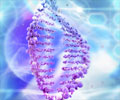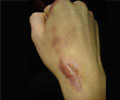A distinct kind of collagen offers protection against Alzheimer's disease, according to scientists.
A distinct kind of collagen offers protection against Alzheimer's disease, according to scientists.
Scientists from the Gladstone Institute of Neurological Disease (GIND), UCSF, and Stanford have found that collagen VI may protects brain cells against amyloid-beta (Aa) proteins, which are believed to cause Alzheimer"s disease."We first noticed the increase in collagen VI in the brain of AD mouse models, which inspired us to look for it in the human condition and to define its role in the disease," Nature quoted lead researcher and GIND director Lennart Mucke as saying.
To identify the key biological pathways, the research team from Gladstone outlined the alterations in gene expression with the help of DNA microarrays.he research team looked at dentate gyrus, the brain area crucial to memory and most susceptible to AD.
They compared the genes that were activated and deactivated in normal mice and a mouse model of AD, and found an unusual increase in collagen VI in the mice with AD.
Following the initial findings, team then decided to examine brain tissue from AD patients and normal non-demented humans.
The analysis further revealed that the cellular source of the collagen VI in the brain was neurons, the very cells that the disease attacks.
Advertisement
"We were particularly curious whether collagen VI contributed to neuronal damage in AD or was produced as a defence mechanism against it," added Dena Dubal, MD, PhD, co-lead author of the study.
Advertisement
They found that Aâ added to neurons grown in culture increased the expression of collagen VI and that this process involved the immune regulatory cytokine TGFa.
Moreover, the increasing the amount of collagen VI in the cultures effectively protected the neurons against Aa toxicity.
"This striking protective effect suggests that increased neuronal production of collagen VI is an important component of the brain"s defence against Aa," said Dr. Mucke. "It made us really curious about the underlying mechanisms."he study appears in recent edition of the journal Nature Neuroscience.
Source-ANI
SAV














